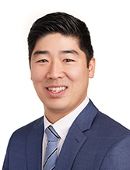- Case-Based Roundtable
- General Dermatology
- Eczema
- Chronic Hand Eczema
- Alopecia
- Aesthetics
- Vitiligo
- COVID-19
- Actinic Keratosis
- Precision Medicine and Biologics
- Rare Disease
- Wound Care
- Rosacea
- Psoriasis
- Psoriatic Arthritis
- Atopic Dermatitis
- Melasma
- NP and PA
- Skin Cancer
- Hidradenitis Suppurativa
- Drug Watch
- Pigmentary Disorders
- Acne
- Pediatric Dermatology
- Practice Management
- Prurigo Nodularis
- Buy-and-Bill
News
Article
Approximately 65% of Dermatologists in Japan Report Dissatisfaction With Treatment Options for Severe Prurigo Nodularis
Author(s):
Researchers conducted a web-based survey to gain insights into current clinical practice for PN in Japan.
Almost 65% of surveyed dermatologists in Japan reported feeling dissatisfied with available treatment options for severe cases of prurigo nodularis (PN), according to a study published in the Japanese Dermatological Association's Journal of Dermatology.1
Researchers reported a strong relationship between decreased treatment satisfaction among clinicians and increased disease severity.
Background and Methods
A 2020 paper published in the same journal reported that approximately 1.82% of 67,448 dermatological patients in Japan had a diagnosis of PN.2 However, there is limited research into the overall prevalence and treatment preferences of PN in Japan, leading researchers to explore this area of unmet need.
Researchers Murota et al conducted a web-based survey distributed to dermatologists and patients with PN in Japan from April to June 2022. Dermatologists were asked to have seen at least 1 patient with PN in the 3 months leading up to survey completion.
The study surveyed 117 dermatologists, with 93.2% holding board certification from the Japanese Dermatological Association. Of these, a majority (61.5%) worked in hospital settings. On average, these dermatologists treated 15.3 patients with PN over the most recent 3 months.
Findings
Researchers found that dermatologists primarily relied on clinical evaluations and patient interviews to diagnose PN. Blood tests, skin biopsies, and systemic examinations were less commonly utilized. Specifically, 71.8% of dermatologists reported rarely using blood tests, 54.7% infrequently performed skin biopsies, and 37.6% seldom conducted systemic examinations.
Hospital-based dermatologists were more likely to use blood tests (19.4% vs. 6.7%) and skin biopsies (11.1% vs. 2.2%) compared to their clinic-based counterparts.
In the absence of standardized severity classifications for PN, dermatologists based their assessments on clinical experience. The most commonly used parameters were the number of pruritic nodules and the degree of itching, both considered by 93.2% of respondents. Other factors such as the size of nodules, quality of life, duration of PN, and pain level were also evaluated but less frequently.
Dermatologists reported prescribing topical corticosteroids (TCS) and antihistamines. TCS were prescribed for mild to severe cases, though the frequency decreased with increasing disease severity. Antihistamines followed a similar pattern. In severe cases, 21.4% of dermatologists used cyclosporine, and 20.5% used oral corticosteroids.
While 57.3% of dermatologists reported being "very" or "somewhat" satisfied with treatments for mild PN, satisfaction rates dropped to 18.8% for moderate and 9.4% for severe cases of PN. Conversely, dissatisfaction increased with disease severity, with 64.1% of dermatologists expressing dissatisfaction with severe PN treatment outcomes.
Conclusions
According to researchers, this study is the first web-based survey of dermatology clinicians in Japan to evaluate PN treatment modalities. Possibilities of recall bias and a lack of generalizability to the overall population of dermatologists in Japan may have limited the study.
"The findings confirmed that dermatologists usually rely on numbers of nodules and degree of itch for severity assessment," according to Murota et al. "Dermatologists are generally not satisfied with the treatment for patients with severe PN which leads to the use of off-label drugs listed in the guidelines."
Moving forward, study authors called for more effective treatment options for patients with PN.
References
- Murota H, Matsumoto M, Arima K, Yoshida T, Fujita H. Current clinical practice of prurigo nodularis in Japan: a cross-sectional web-survey among dermatologists. J Dermatol. September 3, 2024. doi:10.1111/1346-8138.17400
- Satoh, T, Yokozeki, H, Murota, H, et al. 2020 guidelines for the diagnosis and treatment of prurigo. J Dermatol. 2021, 48, e414–e431.






